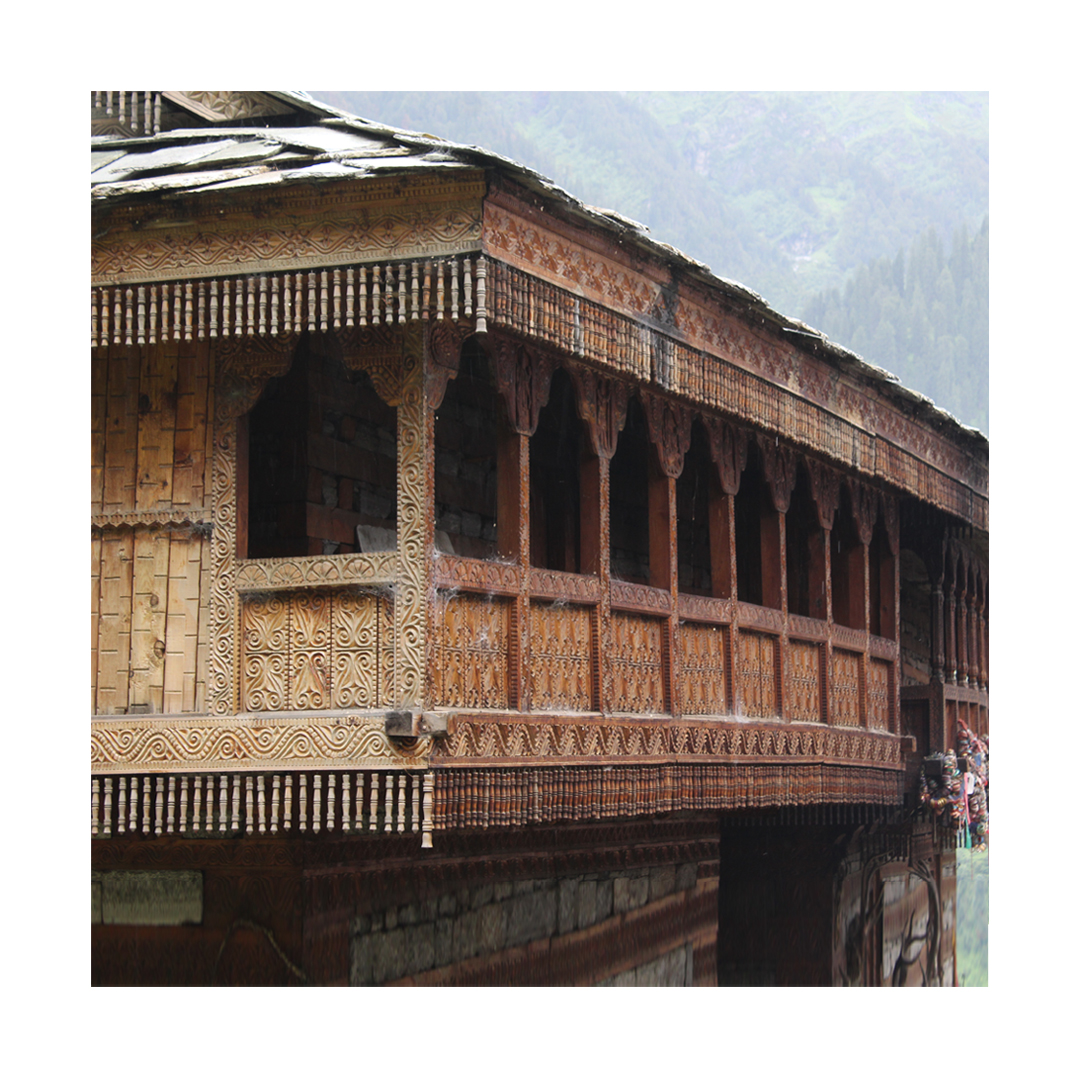Vernacular Architecture of Himanchal pradesh
'MANIKARAN' and 'SHANGNA' villages are on hills, often visible from the banks of the Parvati River that runs down the middle of the valley, which is a one-hour trek up from the kullu. The villages are modest in size, ranging from anywhere between 30-40 houses, to ones like Dharga, which comprise of 2-3 dwellings. Apple orchards and fields of crops can also be spotted on the hills.
TRADITIONAL ARCHITECTURE
In Himachal, there is amongst the last few villages that still practise eco friendly kath kuni architecture and still practise the traditional construction methods.
LONG LASTING STRUCTURES: Kath kuni is derived from two words ‘kashth or kath’ for wood in Sanskrit and ‘kona’ for corner. With many typical ancient structures having survived tectonic tremors, the resilience of the kath kuni structures lie in the flexibility of dry masonry and alternate layers of wood beams without any cementing material. The stone plinth rises above the ground level giving strength to the superstructure and also preventing it from snow and ground water.
WEATHER FRIENDLY ARCHITECTURE: While a truncated stone corner protects the wooden beams, a wooden peg known as kadil helps in keeping solid wood beams in place. The double-skinned walls with the air gap between two parallel wooden beams filled with loose, small stone pieces insulates the structure, keeping it warm in cold weather and cool in summers. The air gaps also dissipate the seismic force during earthquakes preventing cracks and caving in of walls.
AESTHETICALLY PLEASING: This mountain architecture, that seems to grow organically from the terrain and blends in its surroundings seamlessly, does not compromise with aesthetics either. The locals carve columns and beams with elaborate patterns for the decoration. The mix of texture of stone with wood creates Interesting pattern on the walls.
